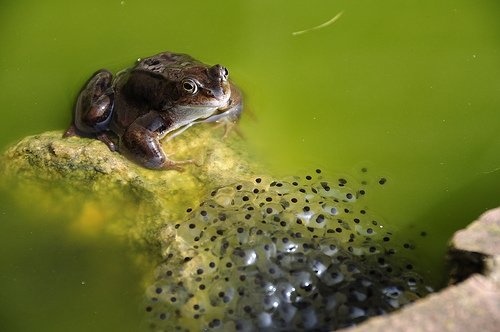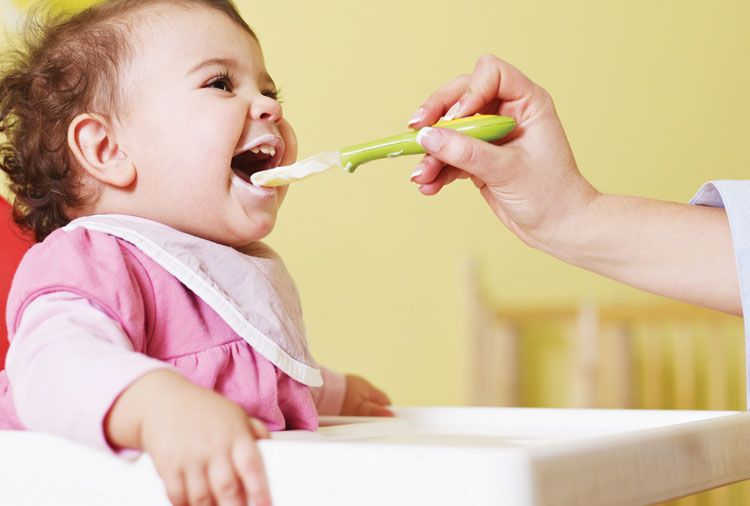Feeding baby squirrel with syringe
Squirrel Feeding Techniques | Mysite
Feeding an orphaned squirrel requires the right tools, positioning, speed, and frequency. Make sure to learn the proper techniques before attempting to feed a squirrel.
On this page, you'll find the steps necessary to properly prepare, transition, and feed a baby squirrel as well as links to other necessary information.
If this information isn't enough and if you need additional help, please call us or speak with another qualified rehabilitator to get the training or assistance you require.
Preparing Formula for Squirrels
Mix 2 parts warm water with one part Fox Valley formula and mix well. Store mixed formula in refrigerator for up to 48 hours.
Milk replacement for babies transitioning to formula or those with stool or digestive problems should be supplemented with a small amount of acidophilus (1/8 tsp) per ¼ cup mixed formula. As a preventative measure, it is acceptable to always add a pinch of acidophilus to the formula right before feeding.
If this is the first time you are offering formula to the baby, the baby must be fully hydrated and slowly transitioned onto full strength formula. Reference the section below entitled, ‘Transitioning to Formula’
Feeding Preparation
Warm only the formula you will be using for a single feeding. Excess formula may be used later if refrigerated. The formula should be reasonably warm to the touch when squirted on the inside of your wrist, but not hot. Add a pinch of acidophilus powder for digestive support to the warmed formula and mix well.
Fill the syringe with the formula and acidophilus mixture. Tightly squeeze a nipple onto the end. The nipple should not easily pull off when gently tugged. The nipple selected must not be small enough to be aspirated into the baby’s lungs.
REMEMBER
Never feed a cold baby and always stimulate a baby under six weeks old or whose eyes are still closed to eliminate after every feeding!
Feeding Hygiene
Wash your hands before and after feeding the baby.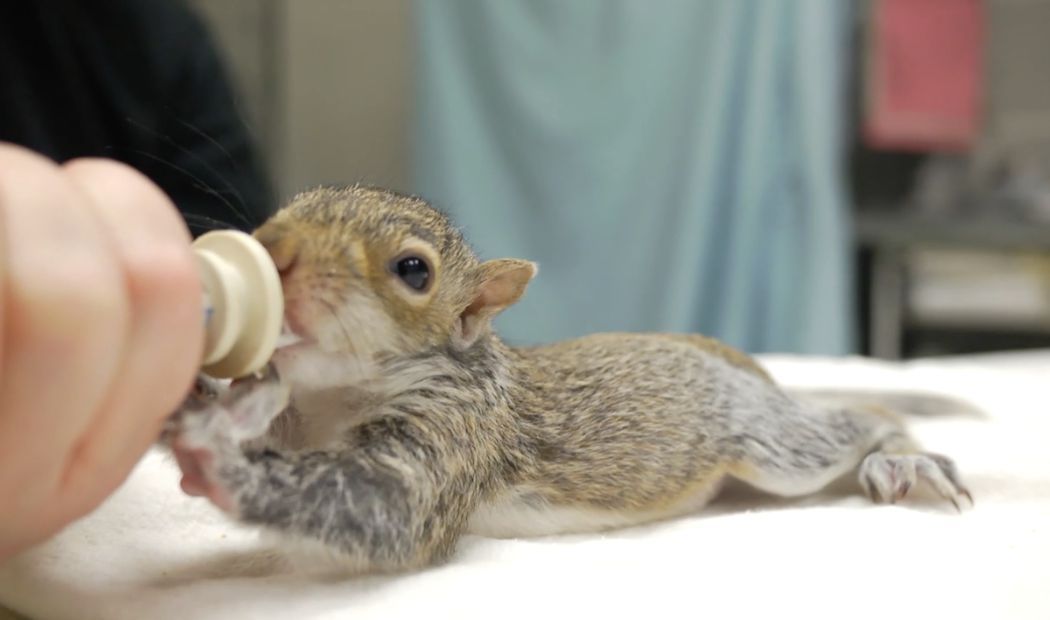 Don’t use strong smelling hand soap or lotions as baby’s sense of smell is extraordinarily acute! Also, babies don’t like cold hands.
Don’t use strong smelling hand soap or lotions as baby’s sense of smell is extraordinarily acute! Also, babies don’t like cold hands.
Place the nipple against the mouth of the squirrel and squeeze out a little milk. Most babies will start by licking the milk but then rapidly progress to sucking very hard. Press the syringe plunger down very slowly, controlling the rate of feeding. If milk bubbles out of the nose, the baby starts gaping or making a ‘guppy face’, immediately pull the nipple out of the baby’s mouth.
Reference the ‘Controlling Feeding Rate’ section. Do not try to force fluids into a baby unwilling or unable to swallow.
Feeding Position
Always feed the baby in an upright position in warm conditions with good lighting so that you can monitor the squirrel’s swallowing reflex.
If the baby does aspirate fluids, pull the nipple away from the mouth, and (while firmly supporting the head and body) with a few gentle rapid forward motions, tip the baby forward to help gravity drain the fluid from the nose, blot the nostrils.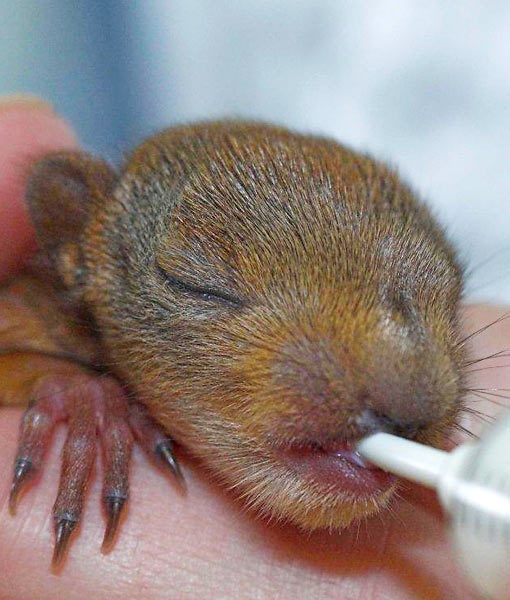
When the baby is calm and the airways are clear, resume feeding.
Important! much like avoiding ‘shaken baby’ syndrome in humans, don’t ever shake or jerk a baby’s head.
If your baby aspirates fluids frequents, try using a smaller syringe, a nipple with a smaller hole, or pressing your thumb against the side of the plunger. Reference the link entitled, ‘Feeding Complications’
Controlling the Feeding Rate
Squirrels can be pigs and will frequently suck very hard and will, if given the opportunity, over eat. Overeating is not ever a good thing!
Signs you are feeding too quickly: the baby makes a yawning motion, milk bubbles from the nose or mouth and sneezing. Resolution: stop it. To help accomplish that, use a ‘slower’ nipple (smaller hole) and or a smaller size syringe that provides better control. If the baby sucks so hard that the syringe plunger rapidly moves on its own down the barrel, place your thumb against the plunger to add additional resistance and slow the flow.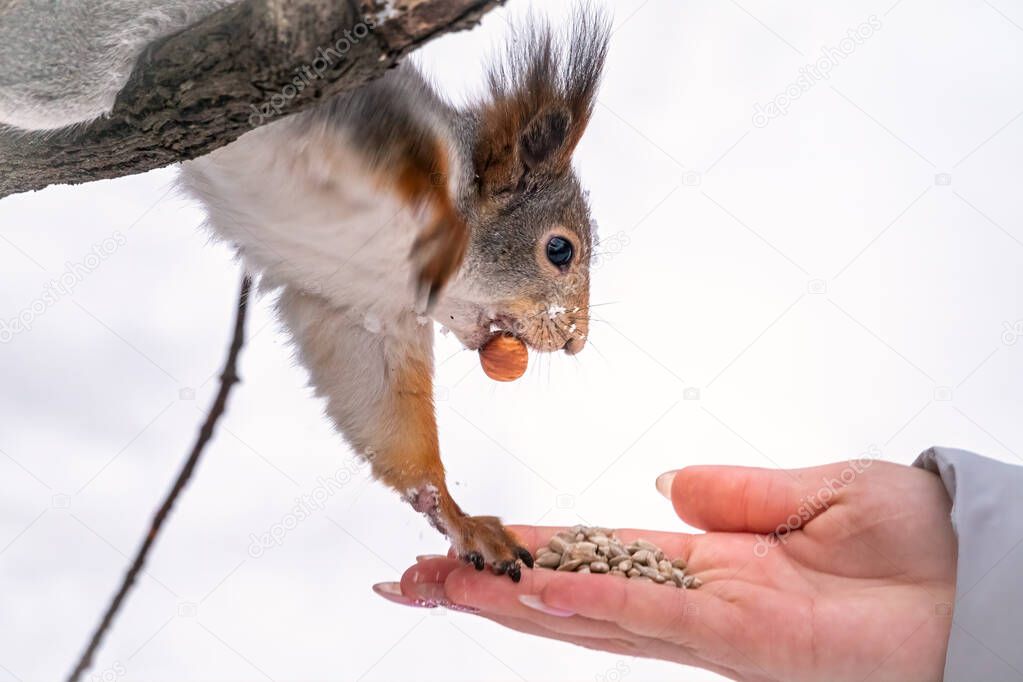
Transitioning to Formula
After the baby is warm, properly hydrated (usually on an electrolyte hydration fluid like Pedialyte for 12 to 24 hours, and alert the baby must be transitioned over to full strength formula gradually over several feedings. Introducing formula to quickly will result in life threatening diarrhea and bloat.
Over the next six feedings, increase the strength of the formula according to the schedule below. If no diarrhea or bloating occurs after transition, continue feeding the baby the full strength formula according to the Standard Feeding Schedule. Formula is always mixed with water and not a hydration fluid because the formula already contains electrolytes.
More Resources
Milk
Substitutes
Get recommendations on the best squirrel milk substitutes for healthy babies.
Feeding Schedule
Learn how often to feed your baby and exactly how much based on their age and weight.
Feeding
Tools
Get recommendations on the best possible implements for feeding baby squirrels.
Feeding Complications
Make yourself of what could go wrong during feeding, what signs to look for, and how to prevent it.
Warming Baby Squirrels
Before you feed, make sure your baby squirrel is safely warmed using our gentle and simple methods.
Treating Dehydration
Learn the signs of dehydration in baby squirrels and how to treat them.
Potty
Stimulation
Learn how to safely stimulate your baby squirrel until they are able to potty themselves.
Squirrel
Board
Have more questions? Ask the Squirrel Board, a forum managed by rehabbers and experts.
Squirrel Feeding Tools | Mysite
As with most jobs, having the right tools makes all the difference between a successful outcome (a healthy releasable squirrel) and dismal failure (illness or death from feeding related problems like aspiration phenomena, diarrhea and bloat).
Its vitally important that you feed the squirrel the correct formula in the right amount at the proper flow rate.
Recommended Suppliers
Chris' Squirrels
& More
The Squirrel Store
Henry's Healthy
Pet Foods
Fox Valley Animal Nutrition
Syringes
Most squirrels nurtured from newborn to weaning benefit from multiple syringe sizes that increase as the volume per feeding increases. It is best with younger or smaller species to start with a 1cc syringe that provides the maximum feeding rate control and gradually graduate to 3cc , 5cc, and 10cc syringes.
O-Ring syringes are an excellent choice for not sticking and providing superior feeding control; however, standard syringes will work also and even a dropper will do for very small babies.
1 and 3 cc syringes usually come in a slip tip design that will work with a canula, silicon, or catac nipples. 5 to 10 cc syringes come in either slip tip or leur lock designs. Select a syringe with a leur lock design if you plan to use the standard 2 oz nurser nipples, or elongated nipple. A modified nipple can fit either type of syringe tip.
Select a syringe with a leur lock design if you plan to use the standard 2 oz nurser nipples, or elongated nipple. A modified nipple can fit either type of syringe tip.
Nipples
Some nipples do not come with a pre-cut hole so you may need to create one by either searing the tip with a small hot needle or cross cutting the nipple to form a flexible opening. Crosscutting a nipple is accomplished by using small very sharp scissors to form an X or Y "cross-cut" on the nipple to achieve the desired flow rate.
You’ll know that the hole is the correct size when you invert the bottle, and the milk slowly drips from the nipple. If a steady stream pours out, the hole is too big.
In a pinch, a baby can be fed with only a syringe (no nipple) or a dropper. Some babies don’t take to the hardness and won't readily feed. There is also concern that regular feeding using a tip that is dissimilar to the mother squirrel's nipples (hard, inflexible or misshaped, square) may cause damage to baby’s delicate gums or developing teeth resulting in the teeth not aligning properly (Malocclusion).
Squirrel teeth grow about 6 inches per year so if they don’t align and naturally wear down they must be euthanized. Malocclusion is a horrible death sentence for wild squirrels! Reference Teeth Issues.
Bottles
Many rehabilitators don't recommend the use of nurser bottles since they can deliver the formula too quickly causing the baby to aspirate formula into the lungs. This can result in aspiration pneumonia.
Nonetheless, they are usually readily available at most pet stores. Pet nursers tend to work better with older babies.
More Resources
Feeding Techniques
Learn how to properly and safely prepare food for and then feed your baby squirrel.
Feeding Schedule
Learn how often to feed your baby and exactly how much based on their age and weight.
Formula
Options
Get recommendations on the best formula to buy or make at home for baby squirrels.
Feeding Complications
Make yourself of what could go wrong during feeding, what signs to look for, and how to prevent it.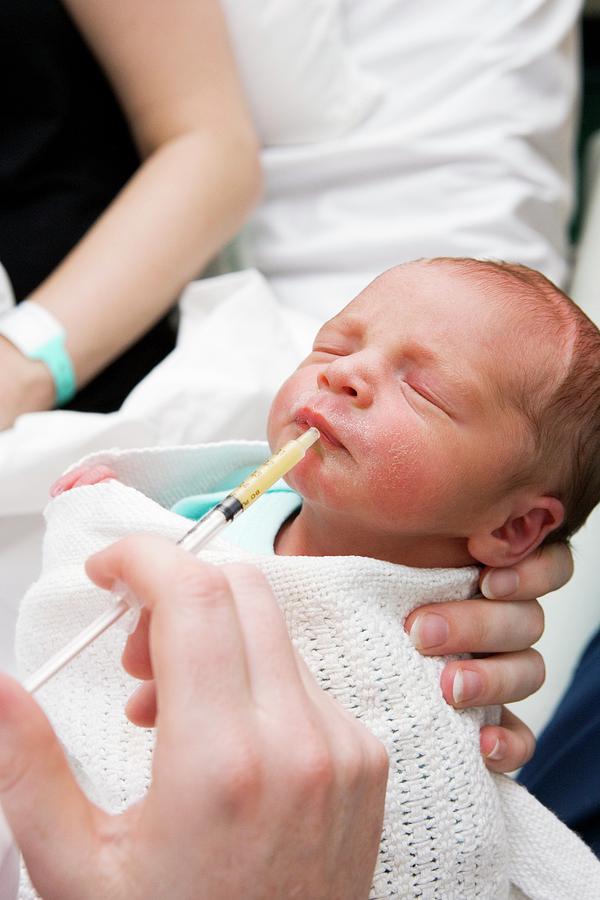
Warming Baby Squirrels
Before you feed, make sure your baby squirrel is safely warmed using our gentle and simple methods.
Treating Dehydration
Learn the signs of dehydration in baby squirrels and how to treat them.
Potty
Stimulation
Learn how to safely stimulate your baby squirrel until they are able to potty themselves.
Squirrel
Board
Have more questions? Ask the Squirrel Board, a forum managed by rehabbers and experts.
Squirrel fell out of the nest. Squirrels reproduction and lifestyle. Is it worth getting a squirrel as a pet
What to feed a squirrel?
One of the products that I use in feeding baby squirrels is Esbilac milk replacer for puppies. You can purchase it at most pet stores.
Esbilac may be sold in powder or liquid form. I prefer to buy Esbilac powder. Do not buy instead of Esbilak its substitutes that you can offer in the store.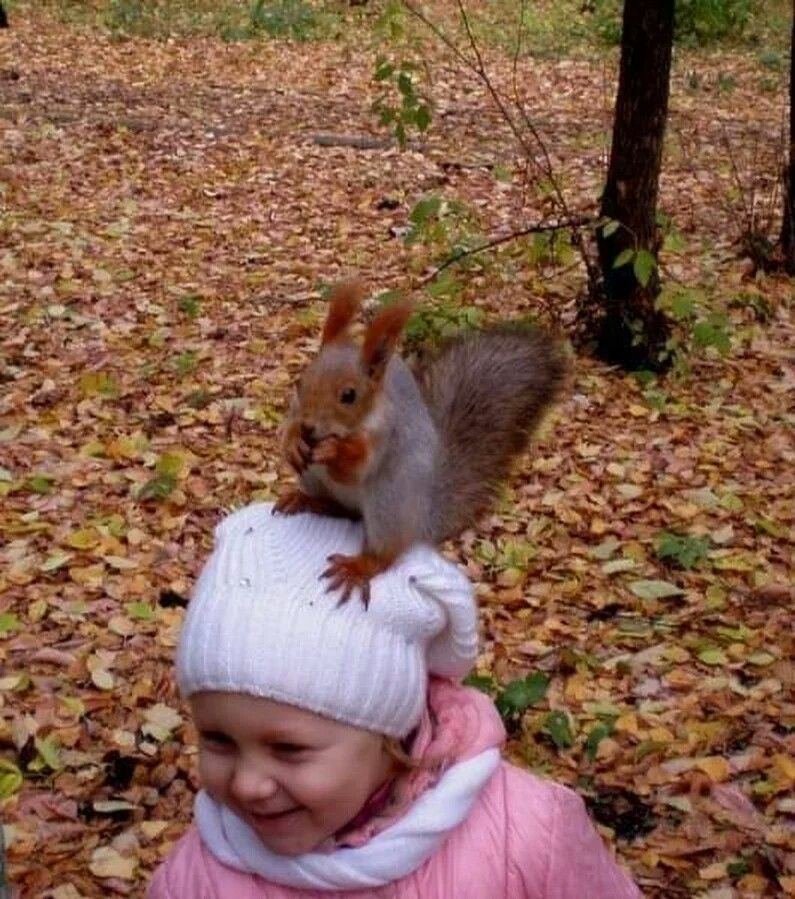 At the same time, get a few syringes in the store (or pharmacy), but without needles.
At the same time, get a few syringes in the store (or pharmacy), but without needles.
You can pick up a gift for your loved one in the online store dom-podarka.ru.
Never, ever use bottles with nipples when feeding a squirrel! The squirrel can suffocate because of them!
Instead of bottles, you will need 1 to 3 unit syringes for feeding very young squirrels, and 5 to 10 unit syringes for feeding slightly older squirrels.
Instead of needles, you need to put small papillae on syringes, which can be sold in pet stores.
If you cannot find such small papillae, then use a pipette, but in this case, be extremely careful not to feed the squirrel too quickly, otherwise it may choke.
Mix 2 parts liquid esbilac with 1 part water (if using powdered esbilac add 2 parts water to 1 part esbilac). You can also add just a little fruity sweetener for kids. Only quite a bit! You can use fruit banana sweetener - squirrels really like this taste.
You can also add some yoghurt to the nutritional formula.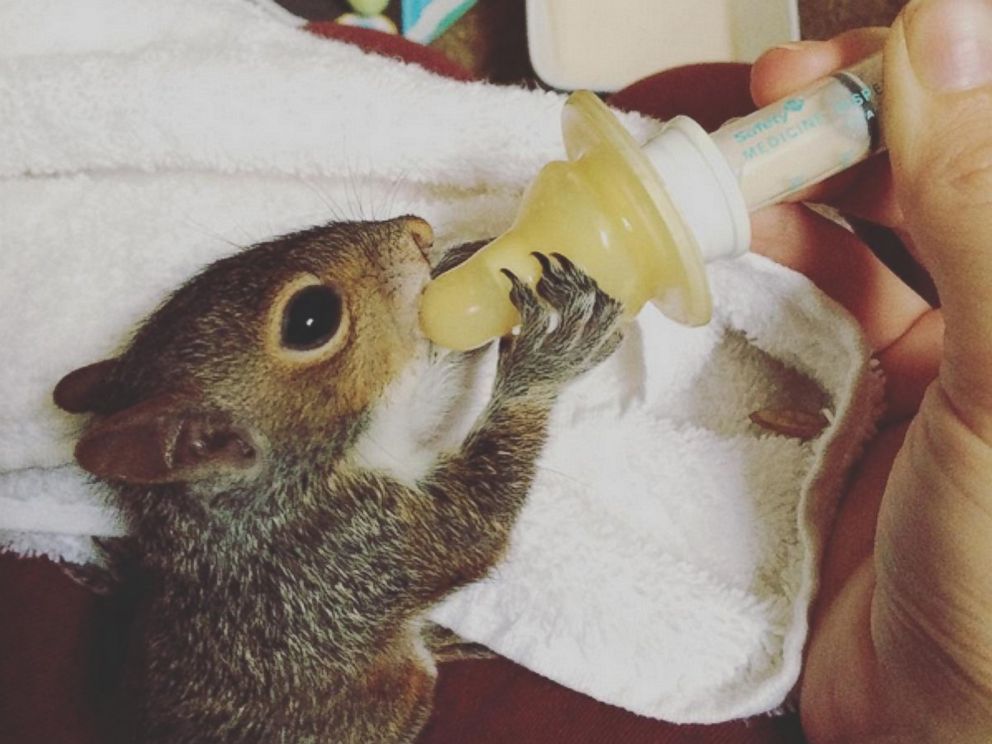
Mix the formula in a clean jar and then store the mixture in the refrigerator.
Then, for each feeding, heat only the part of the formula that will be used for that feeding.
When heating the mixture in the microwave, be careful not to heat the mixture too hot.
Then draw the formula into the syringe and feed the squirrel very gently.
When feeding, I lay the older baby squirrels on a flat surface and feed them in that position. If the squirrels are still too small, then you can feed them by holding them in your hand.
Be very careful and slow to prevent the squirrel from drowning.
Sometimes a baby squirrel can suckle formula so fast that it starts to choke. In this case, you need to immediately stop feeding and hold the baby upside down so that excess fluid can flow back out. After that, you need to wipe the squirrel's nose and mouth and then continue feeding, only more slowly.
A very small baby squirrel with hair that is still completely missing or has barely begun to grow, needs to be fed regularly every 2-3 hours, as thin squirrels cannot eat enough at one meal.
Baby squirrels at two to three weeks of age should be fed regularly every 3-4 hours.
Three to five week old baby squirrels need to be fed every 4-5 hours.
At the age of five weeks, squirrels should be fully furred and their eyes should be opening. At this age, they can be fed every four hours during the day, and can no longer be fed at night.
The amount of food a baby squirrel needs at each meal is not strictly defined. The squirrel may eat a little more or a little less.
Here is an approximate feeding schedule for baby squirrels depending on their age:
From one day to two weeks old: 0.5-2 cc see for each meal, 6-8 feedings per day.
2 to 4 weeks old: 2-4 cc. see for each meal, 5 or 6 feedings during the day.
4 to 6 weeks of age: 4-6 (or even more) cc. see for each meal, 4 meals during the day, you can no longer feed at night.
From the age of six weeks, squirrels can already eat more solid food (zu prem biscuit and small pieces of plant food) in addition to the nutritional formula that they need to be given in a volume of 6-12 cc. see at every meal. Squirrels of this age need to be fed 2-3 times a day.
see at every meal. Squirrels of this age need to be fed 2-3 times a day.
I always give baby squirrels a nutritional formula until then. Until they give up on it.
Also squirrels are given goat's milk with the following calculation:
1 day - 1:4 (goat's milk:water)
Day 2 - 1:3 (goat's milk:water)
Day 3 - 1:2 (goat's milk:water)
If a baby squirrel is fed goat's milk, its feces are like yellow toothpaste. If the feces become more liquid, start giving the squirrel the mixture as on the first day (1:4).
Squirrel must always be clean. After each feeding, wipe around the mouth with a damp cloth. Gently clean the genitals and anus several times a day (more often if necessary).
Vitamins must be added to goat's milk mixture. Very tiny squirrels are given one drop twice a day during the first week of feeding. Squirrels of three weeks of age are given one drop 3 times a day. When the squirrel opens his eyes, give him two drops of vitamins 3 times a day.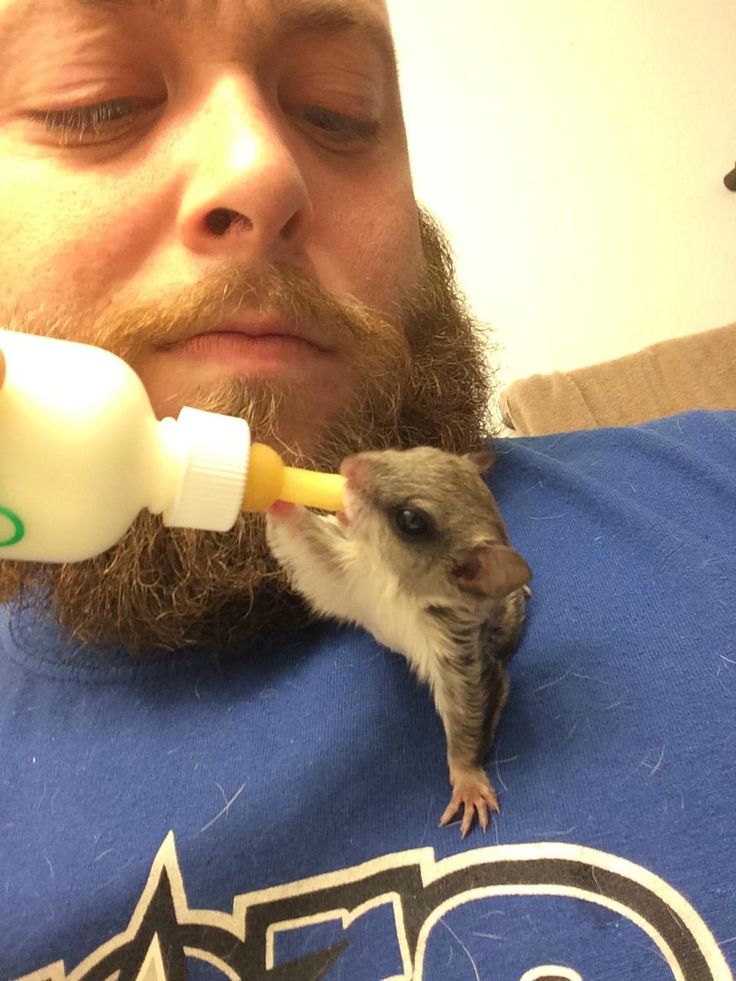
At the end of June 2011, a squirrel was brought to our office. More specifically, squirrels. These squirrels fell out of the hollow right on the heads of walking citizens.
Now let's figure it out. How could tiny squirrels, who had just opened their eyes, fall out of the hollow? And why did the negligent mother immediately brazenly sit on a branch, did not take children, did not react to people's comments? Everything is simple. The squirrels did not fall, but were thrown out by their mother. It is not uncommon (for old squirrels or if these are late broods, then maybe for other reasons) squirrels are born with underdeveloped internal organs. In captivity, such animals are cheerful and cheerful, they jump, eat, and then suddenly one fine morning they do not wake up. Nature rewarded such unviable squirrels with an unpleasant specific smell. And the mother squirrel throws them out of the nest like something smelly. No animal parent will waste time and energy on obviously sick and weak offspring. The squirrels will surely die. They will quickly be found and eaten by some predator, and maybe your pet dog. Pity the squirrels. But, in nature, up to 80% of young squirrels die annually, which, for various reasons, do not survive their first autumn or winter. Even with such a figure, squirrels continue to be found in abundance in Bitsevsky Park. Protein is included in the natural food cycle. She herself is considered a "tree rat" - she eats everything. In addition to plant foods, the squirrel eats various insects with pleasure, destroys bird nests (it can eat both eggs and chicks). If the protein is diluted too much, then they will significantly reduce the number of small birds. That is, the squirrel is still a forest robber. In turn, the squirrel is an excellent food for martens and birds of prey. She also intensively makes stocks for the winter and other inhabitants of the forest use these stocks. Thus, for the forest, proteins are needed in any form (living or dead).
The squirrels will surely die. They will quickly be found and eaten by some predator, and maybe your pet dog. Pity the squirrels. But, in nature, up to 80% of young squirrels die annually, which, for various reasons, do not survive their first autumn or winter. Even with such a figure, squirrels continue to be found in abundance in Bitsevsky Park. Protein is included in the natural food cycle. She herself is considered a "tree rat" - she eats everything. In addition to plant foods, the squirrel eats various insects with pleasure, destroys bird nests (it can eat both eggs and chicks). If the protein is diluted too much, then they will significantly reduce the number of small birds. That is, the squirrel is still a forest robber. In turn, the squirrel is an excellent food for martens and birds of prey. She also intensively makes stocks for the winter and other inhabitants of the forest use these stocks. Thus, for the forest, proteins are needed in any form (living or dead).
We return to the forest orphans. If you find a suspiciously weak, such a compassionate cub, then you have a choice. Or do not interfere in the affairs of Nature and pass by. Or, as a Good Deity, you can give the animals a few weeks or months (or maybe years) of life. But, remember once and for all, GOOD DEEDS SHOULD BE DONE WITH YOUR OWN HANDS, AND NOT SHIFTING THEM TO OTHERS!
If you find a suspiciously weak, such a compassionate cub, then you have a choice. Or do not interfere in the affairs of Nature and pass by. Or, as a Good Deity, you can give the animals a few weeks or months (or maybe years) of life. But, remember once and for all, GOOD DEEDS SHOULD BE DONE WITH YOUR OWN HANDS, AND NOT SHIFTING THEM TO OTHERS!
Decided to help the beast - take it home and take care of it. If he is not seriously injured, then we quickly treat and release him. If he is disabled for life, then we provide him with a happy stay in our hospitable home. No need to carry the poor fellow to the Zoo. There is a wagon and a cart for their animals. And here you are with your proteins. Zoo staff will be happy to fill you with a bag of “once-beloved-owners-and-quickly-bored-living-toys”. And you don't have to bring animals into the forestry. There are no nurseries and shelters in the forestry. All worries will fall on the shoulders of the park workers. Such an employee will not receive any outside help, any bonuses or leave to care for the sick.
I hope that the people who brought us 5 baby squirrels will read this article. They brought the animals to the forestry, gave them away, breathed a sigh of relief, wrote down another good deed for themselves and went home. It's all over for them. But it started for me. The hand did not rise to throw out the children (to feed them to the predator, the hand did not rise either). I had to play the role of the Good Deity. I will say, looking ahead, despite all the difficulties, my family and I got a lot of pleasure and impressions from communicating with squirrels. But this is all due to the fact that all the people living in my house are people who LOVE ANIMALS MORE THAN FURNITURE AND CARPETS. Dear reader, have you already wanted to have a squirrel at home? Wait, now I will tell you what you have to face.
Belchats (and me) got lucky from the very beginning. My mother agreed to help feed the baby squirrels. At first, the squirrels only slept in a hat. They were fed 5 times a day with diluted cat's milk. Animal children should not be fed cow's milk. Pet stores sell cat's milk powder concentrate and small bottles with nipples. We feed, wash hats, do massage. Everything seems to be simple. My pets, accustomed to the fact that various strange creatures periodically appear in the house, reacted calmly to the squirrels. They only said: “Lord, they threw some more and there’s nowhere to spit!”
Animal children should not be fed cow's milk. Pet stores sell cat's milk powder concentrate and small bottles with nipples. We feed, wash hats, do massage. Everything seems to be simple. My pets, accustomed to the fact that various strange creatures periodically appear in the house, reacted calmly to the squirrels. They only said: “Lord, they threw some more and there’s nowhere to spit!”
The squirrels have grown. They gave up milk. We switched to adult nutrition and became super-active. I had to give two rooms of the country house at the disposal of the squirrels.
And now the list of outrages that squirrels can do in the house. 4 squirrels (1 did not survive) give the impression that there are at least 20 of them. Everything around you rustles, fastens, jumps and sways. Squirrels are everywhere: on the curtains, on the carpet, in the toolbox, in the bag of cereal, in the box of cotton wool, in the fireplace, under the covers, in the closet with clothes, on your back, on your head, in your pocket, in your leg, and while constantly someone dangles on the floor. The squirrels quickly remodeled the house to their liking. They pulled out the insulation from the wall and insulated the box in which the soap was stored (naturally, the soap was thrown away). They stole all the nuts and stuffed them into the cracks. They found candles and partly ate them (what they didn’t eat was taken away in an unknown direction). They gnawed a dried fish head. They ate the button on the electric razor. All the ropes and rags were collected and taken to a box, already insulated with cotton wool. A cloth was pulled out of the eyeglass case to wipe the glasses. The rag made an excellent mattress. Everything that was there was taken out of the fireplace and beautifully laid out on the floor. Firewood was cut into pieces. All the floors were spitting with seed rinds. Tubes of cream jumped with enviable constancy on the shelves and climbed the curtains. The squirrels had a quiet hour twice a day. Oh, that magical SLEEP HOUR! The kids fell asleep where daytime sleep overtook them: on a shelf, on a lantern, on a bed, in a plate, in a bedside table, on a table, in a vase, etc.
 And here is one more luck: the squirrel is a diurnal animal and sleeps all night. Ours went to bed at 19:30, so that in the evening the rooms were at the disposal of the people (“Hurrah! The little ones went to bed!”).
And here is one more luck: the squirrel is a diurnal animal and sleeps all night. Ours went to bed at 19:30, so that in the evening the rooms were at the disposal of the people (“Hurrah! The little ones went to bed!”).
Don't think that I had a pigsty at home. It was very clean, however, I had to constantly sweep - clean, sweep - clean, and so on ad infinitum.
In mid-August, the squirrels moved to an enclosure on the territory of the administration of Bitsevsky Forest. I thought my problems were over, but no, they've only just begun. With the onset of cold nights, the squirrels began to freeze. All their energy was spent on heating. They did not grow and wrapped themselves chillily in baby summer coats. One squirrel died. The situation is deadlocked. And here I am lucky again - a very good person who works with animals takes my squirrels. Where this good man works, I will not tell you, otherwise you will rush there with your foundlings. Now the squirrels live indoors, they have grown up and even got a gray winter coat.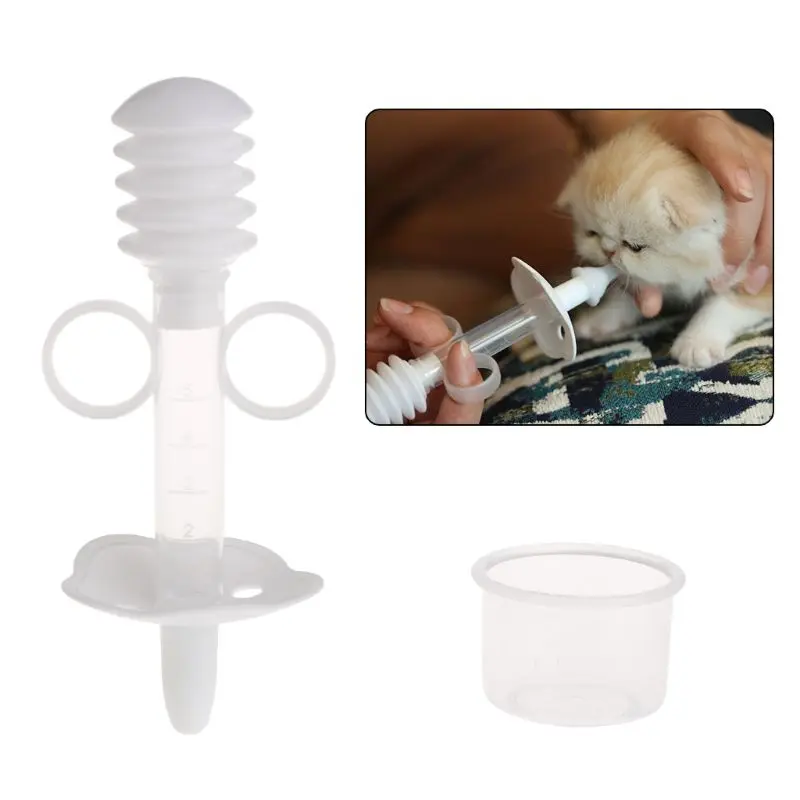 They cannot live in the forest. I don’t even know if it will be possible to move them back to the enclosure in the summer.
They cannot live in the forest. I don’t even know if it will be possible to move them back to the enclosure in the summer.
This is the story. Draw your own conclusions.
P.S. One clear October morning, the strongest and most active squirrel (already the third of five) did not wake up. An autopsy showed that he did not have a single normally developed organ.
At the time of the newspaper going to print (January 2012), the two remaining squirrels (now squirrels) continue to live indoors, they do not complain about their health yet.
Victoria Shlyakhovaya,
chief specialist of the biodiversity department,
monitoring and environmental education
Did you find an orphaned baby squirrel? While it's best to return the squirrel to its mother, you can take care of it yourself until it grows up. However, please note that this is prohibited by law in some regions. First, check your local laws to see if they prohibit keeping squirrels in the home. Compared to pets, keeping wild animals is more difficult and dangerous. However, if you tirelessly care for the squirrel, properly feed it and provide it with a suitable home, then it will grow up, and eventually it will be possible to release it into the wild.
Compared to pets, keeping wild animals is more difficult and dangerous. However, if you tirelessly care for the squirrel, properly feed it and provide it with a suitable home, then it will grow up, and eventually it will be possible to release it into the wild.
Steps
Part 1
How to save a squirrel
First of all, look for the squirrel's mother. Although you can take care of a squirrel, no one will do it better than his own mother. If you find a baby squirrel, you should try to find its mother before taking any further action. The mother squirrel will definitely look for lost children and pick up the squirrel if it is still warm.
- A mother squirrel will not pick up a cold squirrel, because in this case she will think that he is sick or dying. Act according to the situation. If the squirrel is injured or cold, or it is night outside and the mother squirrel has not appeared within 1-2 hours, then the cub is most likely orphaned and needs your help.

- Human scent won't stop a mother squirrel from picking up her baby, so it's safe to touch the squirrel.
- If you find several squirrels and one of them is already dead, be aware that the squirrel will not take the remaining cubs. In this case, you can take the surviving squirrels, and then see if the squirrel mother comes after them after a while.
Carefully pick up the squirrel. Wear thick leather gloves for safety. Examine the baby squirrel to determine if it is injured, if there are insects on it, if it is bleeding, if there are any swelling or wounds. If you find blood, broken bones, or other serious injuries, you should contact your veterinarian as soon as possible to examine the squirrel. In this case, the veterinarian may require you to permit the content of squirrels. In this case, contact your local animal rescue service as soon as possible.
Keep the squirrel warm. Baby squirrels do not produce their own heat, so care must be taken to keep the squirrel warm. Use a heating pad, heated mat, hot water bottle, or other heating device to do this. A heating pad with circulating fluid is best. Set the temperature to low or medium so that the squirrel is comfortable.
Use a heating pad, heated mat, hot water bottle, or other heating device to do this. A heating pad with circulating fluid is best. Set the temperature to low or medium so that the squirrel is comfortable.
- Squirrels need a temperature of around 37 °C. If you have a thermometer handy, you can use it to monitor the temperature and, if necessary, correct it.
- Some heaters turn off automatically after a few hours of operation, so make sure the heating pad does not turn off. If you have to take care of the squirrel yourself, get a heater that does not turn off. The life of a baby squirrel depends on it. You can also take a box and cover it with a towel, or make ventilation holes in its lid - the heat will last longer in a closed box.
Choose a small box. Once you've found something to keep the baby squirrel warm, you'll need a small box (like a shoe box), a basket, or something similar. Lean a heating device against one wall. If it gets too hot, the baby squirrel will simply crawl away.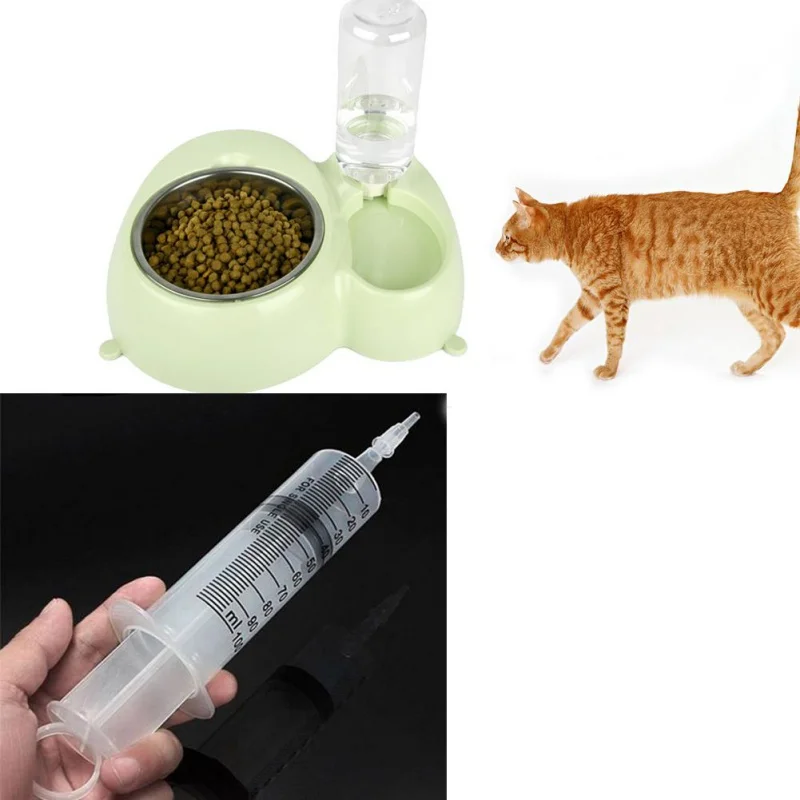 If you are using a heating mat, place under box, not in it.
If you are using a heating mat, place under box, not in it.
- Place a nest in the box. Line the bottom of the box with material from where you picked up the squirrel. Make a cozy nest in the shape of a ring and put the squirrel in the middle. Make sure that the heat source is directed at the nest, but does not touch the baby squirrel.
- If necessary, line the nest with a soft cloth. Do not use towels, as the squirrel can get caught in the paw and break the ankle, dislocate the paw, and the like.
Try again to find the mother squirrel. Position the nest outside. If there are no dogs, cats, foxes and other predators in the area, you can put the nest directly on the ground. If you're unsure about safety, secure the nest to a tree or pole to keep predators out of it.
- When the baby squirrel gets warm, he will instinctively call for his mother. If the mother squirrel is nearby, she will hear and come for her baby.
 Squirrels carry their babies just like cats, so don't worry about the nest being in a tree.
Squirrels carry their babies just like cats, so don't worry about the nest being in a tree.
Not Give the squirrel nuts as the first solid food. Start with healthy vegetables (broccoli, spring greens, kale, etc.). When the baby squirrel gets used to the pellets and vegetables, you can start introducing fruits and nuts. Give your squirrel no more than one nut and 1-2 small pieces of fruit per day.
- Read more:
Squirrel care
Squirrels, even very small ones, unlike rabbits, are fairly easy to raise in captivity, but there are some rules to keep in mind. First, make sure the squirrel really needs your care. It happens that small squirrels fall out of the hollow, but if they are left alone, the mother squirrel will definitely go down after them, and taking 1 by the hair of the scruff of the neck with her teeth, she will lift her back up the tree. Secondly, baby squirrels are in great need of warmth. It is best if artificial heat comes from a homemade heater. The temperature regime and feeding should be normal, but at the same time try to take protein in your hands less often. Nursing squirrels from infancy is divided into three stages: from birth to 4 weeks, from 4 weeks to 2 months, from 2 months to release. Treatment, maintenance and feeding are not the same at each stage.
It is best if artificial heat comes from a homemade heater. The temperature regime and feeding should be normal, but at the same time try to take protein in your hands less often. Nursing squirrels from infancy is divided into three stages: from birth to 4 weeks, from 4 weeks to 2 months, from 2 months to release. Treatment, maintenance and feeding are not the same at each stage.
Eyes of squirrels usually open on 19-21 days; knowledge of this rule will make it possible to accurately determine the age of the animal. 30
Use a medical pipette to feed the tiny squirrels, making sure the milk flow is even. We remind you that the use of a glass pipette is unacceptable. Squirrels are extremely voracious and can even strangle each other in an impatient desire to quickly satisfy their hunger. It is better to feed them on the table, laying a bath towel on it. This will make it easier to control the behavior of the animals and the flow of milk from the pipette. Do not leave squirrels on the table unattended: they may not stay on its surface and eventually fall off.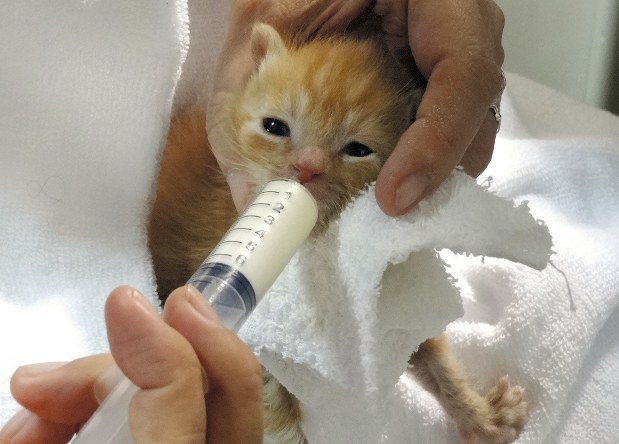
Here is the recommended diet initially: 85 g of condensed milk, a teaspoon of baby food. Wait until the mixture is completely dissolved, add four drops of syrup. You can also give regular milk with the addition of baby food.
The food must be fresh, so every day you need to cook again. Store refrigerated, tightly stoppering the container. Before each meal, warm up to a temperature of 30-35 ° C.
Rinse pipette thoroughly after each feeding. Milk turns sour very quickly, and consumption of it in a spoiled form can cause diseases. If the animal at least once tastes spoiled or too hot milk, the next time it will certainly refuse to eat.
Never bathe an animal. Do not use softwood shavings for bedding, as the dust from it has a bad effect on the animal, clogging up the nostrils and causing discomfort. If you want to carry out hygiene procedures, use baby creams. Do not use cotton fabrics. Cotton stores moisture, and this is fraught with the fact that the animal can get pneumonia. During the period when the squirrel will get used to self-feeding, its paws and muzzle will be stained with the feed mixture. Before returning the animal to its "bedroom", carefully remove food debris with a towel and warm water.
During the period when the squirrel will get used to self-feeding, its paws and muzzle will be stained with the feed mixture. Before returning the animal to its "bedroom", carefully remove food debris with a towel and warm water.
For squirrels it is very good to adapt a cardboard box. The height of the sidewalls should be approximately 30 cm. To be sure, cover it on top with a metal mesh so that the animal cannot get out. Thanks to this coating, the cage will be ventilated, and the animal will feel good. Mount the box in the brooder. Use a soft cloth as a bedding: it is easy to clean, light in weight and retains heat sufficiently. Under this fabric, squirrels can hide from the cold and freely get out from under it if the temperature in the box is normal. Warmth will flow through the cardboard bottom, giving the animals the necessary feeling of comfort. Immediately after the end of each feeding, the animal should immediately be returned to its home. If the chick is healthy, he should oversleep until the next feeding.![]() Keep animals away from newspapers - the lead used in printing can cause illness.
Keep animals away from newspapers - the lead used in printing can cause illness.
After the first period of infancy, when about a week has elapsed since the opening of the eyes, the time will come for the animal to be taught to eat from a plate. The dimensions of the plate or saucer are as follows: about 9 cm in diameter and no more than 2.5 cm deep. For feeding, adjust an additional cardboard box. The bottom of the "dining room" can be lined with paper, which is easy to change periodically.
Place a piece of white bread on a saucer, then pour over the nutrient mixture. Gently bring the animal's mouth close to the food. Repeat the procedure several times until the animal understands what is required of it. Some squirrels learn to eat on their own fairly quickly, while others require patience.
Alternate hand feeding and saucer feeding so that the squirrel does not reinforce one-sided habits. As soon as you find out that the animal is sufficiently accustomed to the saucer, you can finally refuse to feed from your hands.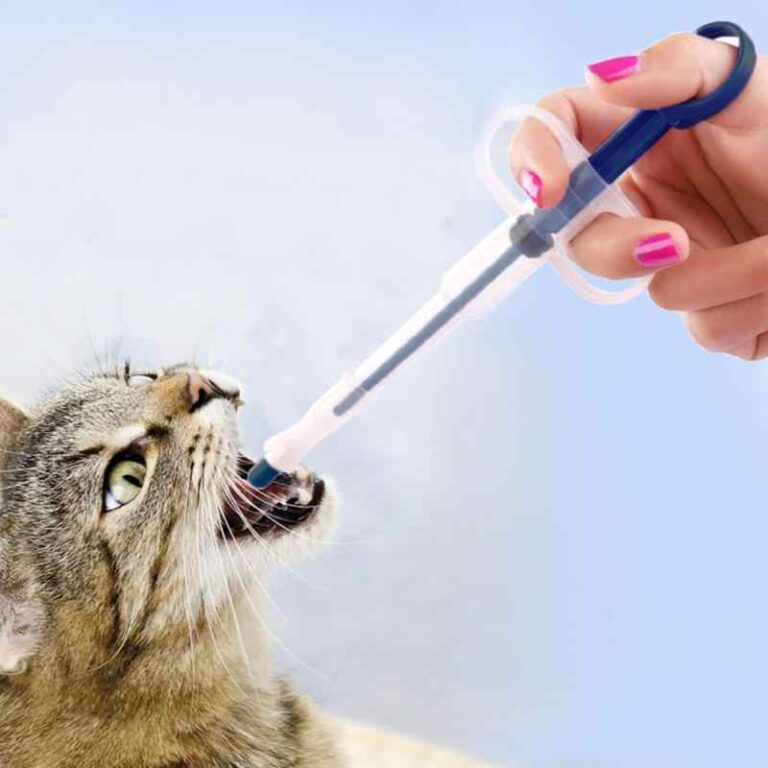 Feeding baby squirrels with bread soaked in milk is very convenient, as the animal will not take too large sips and will not choke. Don't try to feed more than one squirrel at a time. Until the squirrels get used to eating normally, they run around the saucer of food and eventually get themselves dirty and make dirt in the box. In general, they can be very untidy, but do not pay attention to it. As soon as you notice that the squirrel has eaten enough, immediately take it to the sleeping box, where it will dry. When the protein grows up and there is no need for heating, you can gradually add other products to bread and milk.
Feeding baby squirrels with bread soaked in milk is very convenient, as the animal will not take too large sips and will not choke. Don't try to feed more than one squirrel at a time. Until the squirrels get used to eating normally, they run around the saucer of food and eventually get themselves dirty and make dirt in the box. In general, they can be very untidy, but do not pay attention to it. As soon as you notice that the squirrel has eaten enough, immediately take it to the sleeping box, where it will dry. When the protein grows up and there is no need for heating, you can gradually add other products to bread and milk.
Urgent! How to feed squirrels?
- Forum
- Archive
- Animals
The mother squirrel fell off the tree and fell into a barrel of water and drowned, leaving 3 squirrels. What should I do with them? Do we feed milk through a syringe (but then I read that it’s not good for them to eat cow milk)? They are probably 4-5 weeks old, they have teeth, can they already give carrots and nuts? They still don't go very well.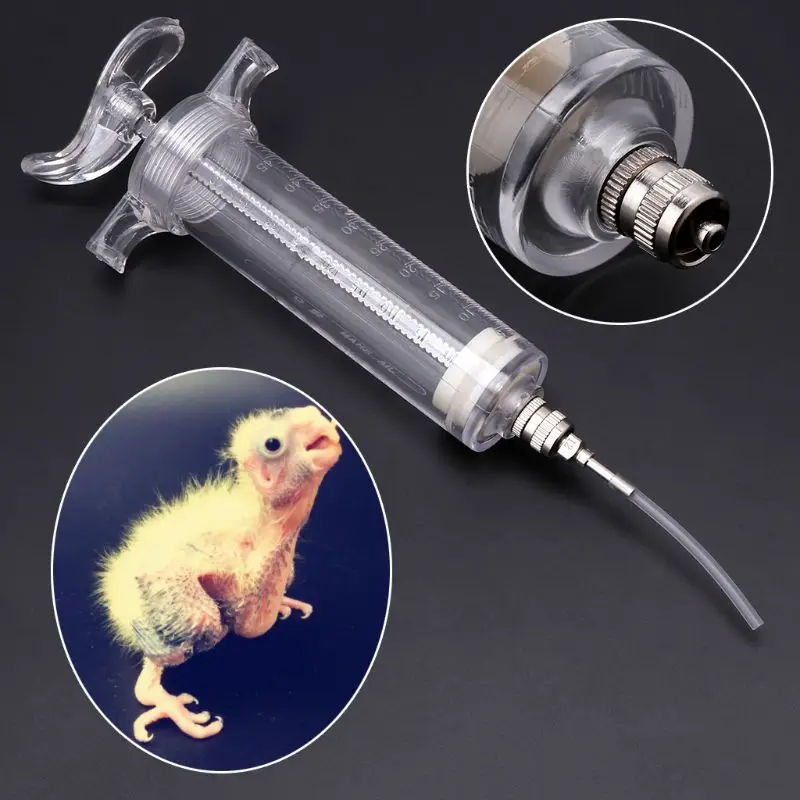
And when can they be released into the forest?
It seems to me that they will no longer be able to live in the forest on their own, sad but true ((( Unfortunately, I don’t know what to do in such cases, but we have a large park in the city where squirrels live and they are fed in a special The last thing you can think of is a pet shop, but that's pretty much the end of the line
Call the zoo and ask how you can help in this case They have zoologists and good veterinarians
Once upon a time, I really wanted to get a squirrel, and I read a lot of everything on this topic. Now I hastily found the most sane links on feeding: http://shkolazhizni.ru/archive/0/n-14753/
http://www.allbelka.com/page04.htm
http://www.zooclub. ru/faq/show.php?id=1177
(cow's milk is really bad for them, it's better to feed them with goats)
You can't give cow's milk at all! Kitten formula or goat's milk would be ideal.
You need to go to the profile forums here, for example, answers to your questions: http://forum.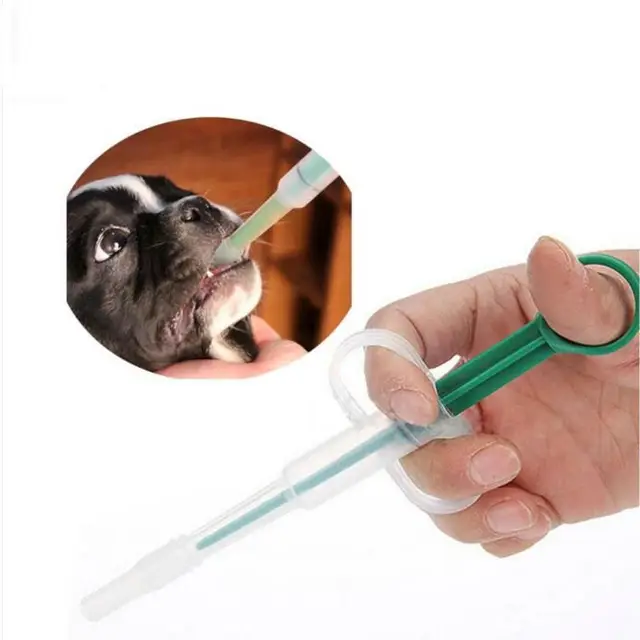 belochki.ru/index.php?showforum=170
belochki.ru/index.php?showforum=170
You're right, releasing them into the wild is certain death. You can find people who want to take them home. I would take it, but I'm far away
We recently found a cage with squirrels in the woods behind our house with our children. There were about 8 of them there. We did not understand who kept them there. Went to visit them after the storm and there was nothing there. Most likely, the foresters looked after. That's what was in the cage: saucers with water, orange peels, some kind of dry food, a warm blanket. The main thing that struck me was that the cage door was ajar by 5-8 centimeters. To prevent it from opening again, stones lay behind the door. When we first saw the cage, the door was also ajar and we closed it. They were afraid that the squirrels would run away. The next day, the door was open again. The cell stood right in the forest, in the bushes. It seems that the "owner" of these squirrels wanted to accustom them to the forest.
But for some reason it seems to me that if now it is possible to feed them "in nature", not in a cage, then it is quite possible that they will be able to adapt ... Do you think it's unrealistic?
Most likely, this is so that the baby squirrels can enter and exit, and larger predators cannot get into them...
I think you will find a lot of useful information here http://forum.belochki.ru/
here! I support this idea. They themselves did the same when the roof collapsed and the bird's chick fell into our office.
Wow, what a clever idea!
our squirrels are small, 2 only eat and sleep, 3 are more active, my parents are leaving for a vacation, they will bring them to me today) if they are left, they will definitely be gnawed by stray cats or dogs. I’ll feed
for now, then I’ll try to take it to Tsaritsyno, there are a lot of squirrels there
God! when I imagine that 3 squirrels will live with me, I feel bad myself, I’m actually not in this part .![]() .. and I work until 9-10 pm,
.. and I work until 9-10 pm,
No, you definitely don't need to go to Tsaritsyno! IMHO, at the first opportunity, return the dacha to "their" tree and grow further there. There is a possibility? Does anyone live there in the winter?
Kozlya, "...return to the dacha on 'their' tree and grow further there..." - how do you imagine it??? Master the skills of tarzan, jump with the kids along the branches and learn how to dry mushrooms for the winter?
The author, you have already been given a couple of good advice - try to contact the experts.
Refer to the profile forum! I gave you the link! Well, it's quite easy.
Squirrels in Tsaritsyno will definitely die
They are guaranteed to die on a tree.
I think they will learn to jump and dry themselves, I mean, to raise them not in a cage, but where they were actually born. As I understand it, they are not already suckling, but slightly grown . ..
..
Why? If they continue to feed?
They will never develop the skills to exist in the wild.
The fact is that the mother plays a critical role in upbringing and education, you cannot take away the mother and hope that the babies will be able to protect themselves and learn how to find food. At first, squirrels take an example from their mother, watching her look for food, etc., while their mother protects them and warns them about predators.
PM
http://www.youtube.com/watch?v=PVjr9L4JxRw
how are the squirrels?
well, growing up, 3 feeding puppy formula, 1 already trying nuts. I read PM, do you live outside the city? how to call you?
, by the way, they turned out to be 4. a day later they found another one, terribly hungry, clung to the syringe, they could not tear it off. I teared myself from the roof! hero (we have 2 floors, they lived under the eaves of the roof) they are already cute, but they were like mice with long tails
Is this a peculiarity of squirrels? After all, kittens, for example, who grew up without a mother, learn to wash themselves and catch and hunt mice . .. Maybe there is still a chance?
.. Maybe there is still a chance?
I think the chance is minimal. True, and my experience is also small, but according to the experience of others and what is known about proteins, the chances seem to be not very good.
Author, well done!
I would keep it for myself - squirrels are excellent animals, only 4 is of course a lot. If you do not have the opportunity to leave them, then I think you will find their owners easily.
Don't disappear, tell me how you're doing.
They learn very badly. I had the experience of raising a kitten (they picked up a newborn mole rat that was not warmed by someone) without a mother. Grew up terribly unadapted! And terrible, I beg your pardon, stupid. Though incredibly handsome!
Author, thank you on behalf of animal lovers! You are smart!
+1 squirrels are such beautiful animals!
I wonder if they can be "adapted" to live at home? our raccoon was never domesticated, behaved in a completely inappropriate way. We had to give it to the green society. I hope that he is alive and happy at large.
We had to give it to the green society. I hope that he is alive and happy at large.
on the subject, I’ll just say that brunduks (also like rodents): http://creagrus.home.montereybay.com/mammals-chipmunks/Chipmunk_merriam-MTY.jpg
http://www.2flashgames.com/2fgkjn134kjlh2cfn81vc34/flash /f-Chipmunk-Biker-3259.jpg
http://pixdaus.com/pics/1226741892Agj79jG.jpg
eat dry cat food with pleasure. Sometimes I "slam" corn for them, so they sweep away everything at the moment
Hm ... I fed five feline foundlings. When they threw it up, their eyes were already open, but they didn’t know how to eat, poop, etc., fed from a bottle, massaged and everything else. Everyone grew up to be quite full-fledged cats, the one that we have left is an excellent mousetrap, it hunts birds in the country, jumps through trees and there were no problems in terms of hygiene either, the rest also seem to be all right ... Although I, too I was worried how they would learn everything without a mother. 0006
0006
Sorry
They enjoy living in the apartment as pets.
Squirrels live wonderfully at home))) I had a squirrel. Dad was at the dacha (we then lived in the north and the dacha was almost in the taiga) and an adult wild squirrel rushed right at his feet, escaping from hunting dogs. He brought her home, because. she clung to him and did not unhook. That's how Nika appeared with us))) She lived in an ordinary parrot cage, ate walnuts and pine nuts, meat, water, fruits and vegetables. No problem in general. She walked around the room, and returned to sleep and eat in the cage. There were no attempts to escape from the window. She loved to hide nuts in flower pots and in my bed))) A couple of times, after returning from school, I plopped down on the bed and flew up like a princess from a pea. She neatly laid out healthy walnuts under a thin blanket, and I ... Here is a story from my childhood
I’m just embarrassed, you wrote me down as an animal lover - to be honest, I’m not an animal lover at all, for me to keep these unfortunate squirrels is just the torment of hell, I save them more out of a sense of duty than from a great love for nature , including wild)
I'm afraid of them, for me they are the same as mice, their husband feeds them from a syringe.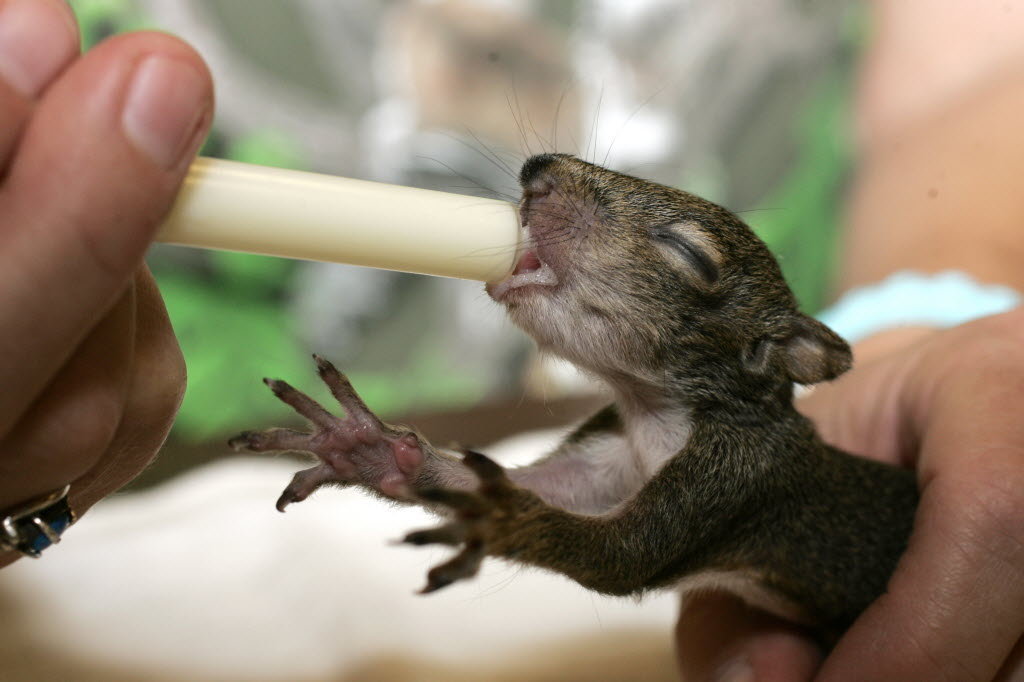 They are growing up well now, they have begun to eat nuts and seeds. Also, the dog (we have the one) decided that these were her children, while they were feeding, the door opened, and they rushed to her, she began to lick them, she didn’t let anyone near them, and they warmed up and fell asleep ... now she constantly sits next to with a cage, guards them from everyone, growls if they ask for food, so she runs to us calling.
They are growing up well now, they have begun to eat nuts and seeds. Also, the dog (we have the one) decided that these were her children, while they were feeding, the door opened, and they rushed to her, she began to lick them, she didn’t let anyone near them, and they warmed up and fell asleep ... now she constantly sits next to with a cage, guards them from everyone, growls if they ask for food, so she runs to us calling.
Last week it was a nightmare, I saved from 2 am to 6 am every day...
They have already become pubescent, outwardly very beautiful steel, 2 sable, 1 red with a white chest - as they draw in cartoons, 1 medium. Have her teeth have begun to crawl out, already biting. now sent with her husband out of town.
Of course, I would very much like them to live in nature, those in normal conditions.
They can no longer live in nature - they are tame. This is exactly up to the first who wants to make a hat out of them. And unfortunately we have a lot of such freaks.
Too late to drink Borjomi, what kind of nature is it? They are not residents in nature. Now the most normal conditions for them are a cozy, warm apartment and a caring hostess with nuts
You really don’t let them go - you spent so much effort to save them. Either keep the kids or find good (experienced) owners.
I fed squirrels (I even have pictures in my passport). Then they released me onto the territory of the sanatorium (we agreed with those working there). There are no dogs there, because there are no villages nearby. Vacationers feed squirrels, their squirrels live there, almost eat from their hands.
Because a squirrel in an apartment is hell. Even for those who love them very much )
How cute! Especially in the last photo, where the squirrel is holding the bottle with its paws.
The fact that the dog warmed them up is very cool indeed! They’re throwing slippers at me now, it’s wrong, but I would still try to “wild” them at least a little. I would take them to hell when they grow up and become completely self-eating and would provide "freedom of choice". For some reason, it seems to me that they will not go into the forest, but will settle on the same tree on your site under your "patronage" - that is. you still have to feed them and keep them at home in winter ...
I would take them to hell when they grow up and become completely self-eating and would provide "freedom of choice". For some reason, it seems to me that they will not go into the forest, but will settle on the same tree on your site under your "patronage" - that is. you still have to feed them and keep them at home in winter ...
how pretty
no words, just emotions such nice pretty little redheads
You have a special occasion The sanatorium is a great option! Almost like in a zoo.
I had a squirrel in the apartment - not really hell. But of course not a super option for the squirrel itself (especially if the apartment is small). Cleaning and fuss of course a lot.
I am afraid that if they smell like a dog, other squirrels will not accept them later (in terms of creating a family, if they still decide to live in the wild)
+ they will get used to the smell of dogs and won't be afraid of dogs.




